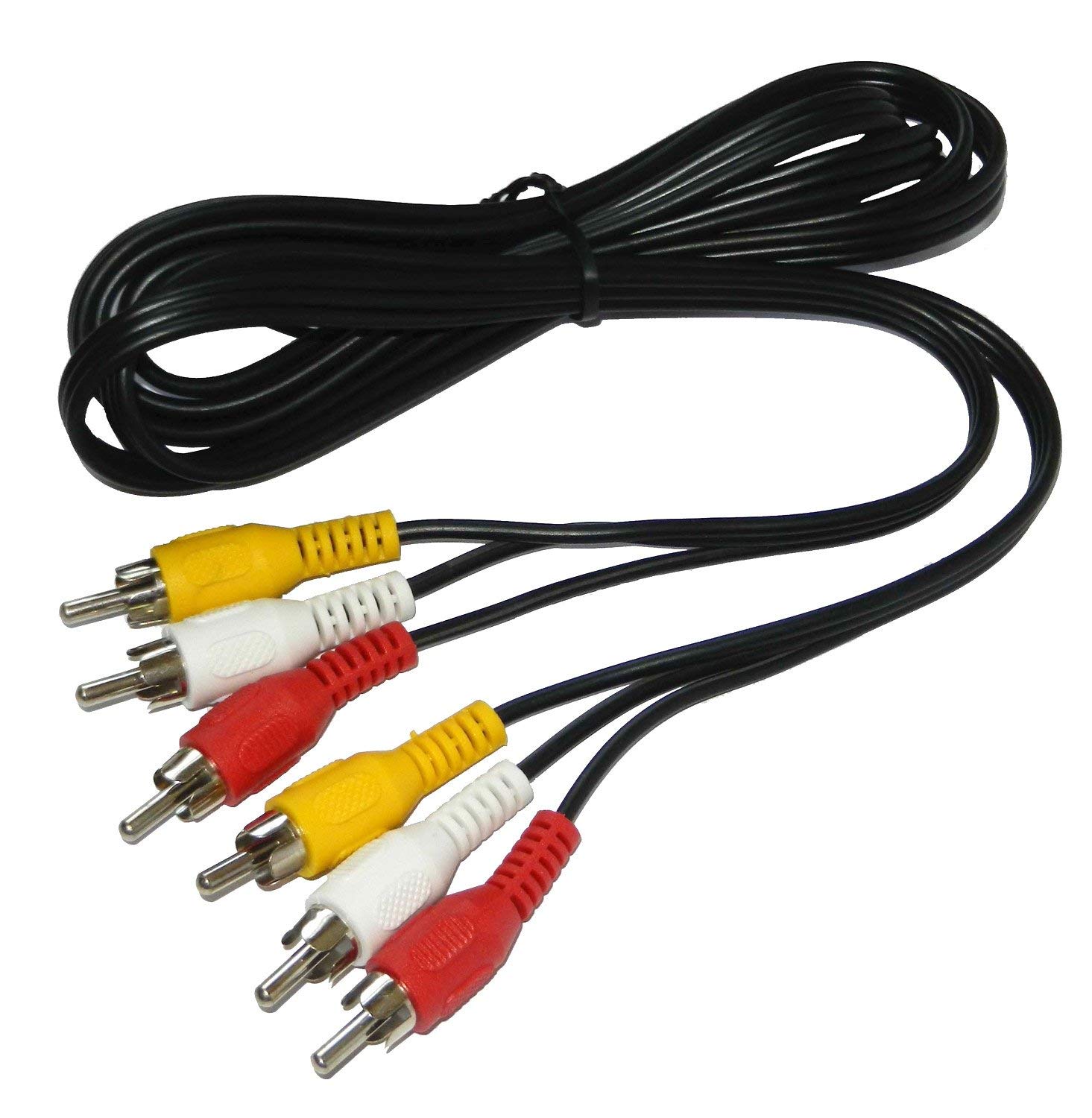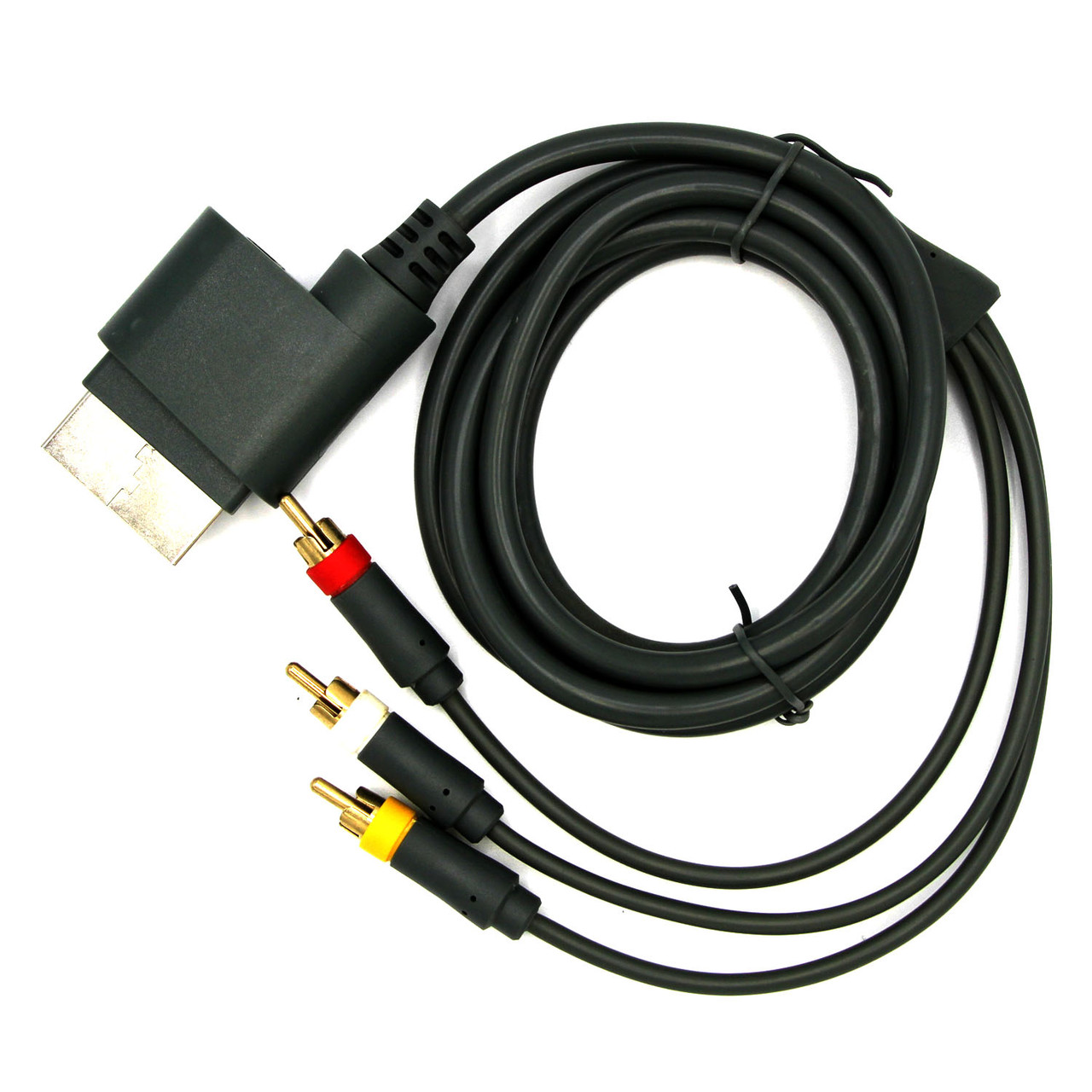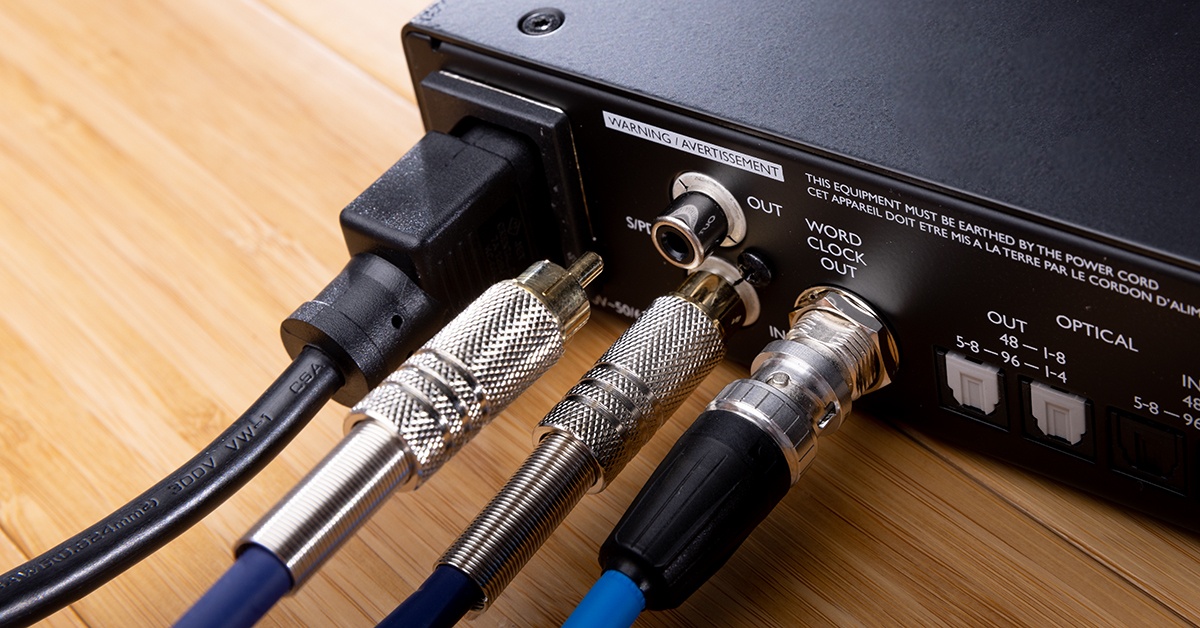Home>Production & Technology>Audio Cable>How To Know What Audio Cable A Headphone Uses


Audio Cable
How To Know What Audio Cable A Headphone Uses
Published: December 20, 2023
Learn how to determine which audio cable your headphone uses and get the best sound quality. Find out more about different types of audio cables.
(Many of the links in this article redirect to a specific reviewed product. Your purchase of these products through affiliate links helps to generate commission for AudioLover.com, at no extra cost. Learn more)
Table of Contents
Introduction
Welcome to the world of audio cables! Whether you’re a music lover, a professional sound engineer, or just someone who enjoys listening to tunes on a quality pair of headphones, understanding audio cables is essential. These unassuming wires play a crucial role in delivering clear and crisp sound from your audio source to your headphones.
With a wide variety of audio cables available in the market, it can be challenging to know which one is suitable for your headphones. Different headphones use different types of cables, and knowing the right cable for your headphones is essential for optimal sound quality and compatibility.
In this article, we will explore the world of audio cables and provide you with the knowledge and tools to identify the type of cable your headphones use. Whether you’re a tech-savvy audiophile or a novice in the audio world, this comprehensive guide will help you navigate through the maze of cable types and connectors.
So, let’s dive in and unravel the mysteries of audio cables, empowering you to make informed decisions when it comes to your headphone setup.
Understanding Audio Cables
Before we delve into the different types of audio cables, it is important to understand the basics. Audio cables are the conduits that transmit electrical signals carrying sound from devices such as audio interfaces, amplifiers, or smartphones to your headphones. These cables are designed to deliver high-quality audio while minimizing signal loss or interference.
Audio cables consist of a conductor, shielding, and connectors. The conductor is typically made of copper or silver and is responsible for carrying the electrical signal. The shielding, made of materials like aluminum or copper, surrounds the conductor and helps minimize interference from external sources such as electromagnetic fields or radio frequencies. Finally, the connectors at each end of the cable allow for easy connection to your audio devices.
One important factor to consider when it comes to audio cables is their impedance. Impedance, measured in ohms, refers to the resistance to the flow of electrical current in a cable. Matching the impedance of your headphones with the impedance of your audio output device is crucial for optimal audio performance. Mismatched impedance can result in poor sound quality, reduced volume, or even damage to your equipment.
Another key consideration is cable length. While longer cables offer more flexibility in terms of mobility, they can also introduce signal degradation over longer distances. It’s important to strike a balance between the length of your cable and the quality of the audio signal you wish to achieve.
Now that we have a basic understanding of how audio cables work, let’s explore the different types of cables you may encounter in the world of headphones.
Types of Audio Cables
When it comes to audio cables, there are several types to choose from, each serving a specific purpose and offering different benefits. Let’s take a look at some of the most common types of audio cables:
- Auxiliary Cables: Also known as aux cables or stereo cables, these are the most commonly used audio cables. They typically have a 3.5mm (1/8-inch) connector on each end and are used to connect portable devices such as smartphones, laptops, or MP3 players to headphones, speakers, or car stereos. Auxiliary cables can deliver stereo sound and are widely compatible.
- TRS Cables: TRS (Tip-Ring-Sleeve) cables are similar to auxiliary cables but offer additional functionality. They have a 3.5mm or 6.35mm (1/4-inch) connector on one end and a TRS connector on the other end. TRS cables are commonly used in professional audio setups, studio equipment, and musical instruments. They can carry stereo or balanced audio signals.
- TRS to XLR Cables: These cables are designed to connect audio devices with a 3.5mm or 6.35mm connector to devices with XLR inputs. XLR connectors are commonly found in professional audio gear such as microphones, mixers, and PA systems. TRS to XLR cables are widely used in recording studios, live sound setups, and stage performances.
- USB Cables: USB cables are not only used for data transfer but can also carry audio signals. USB audio cables are commonly used to connect audio interfaces, DAC (Digital-to-Analog Converters), or headphones with built-in USB connectivity to computers or other devices. USB cables can deliver high-quality digital audio signals and are widely used in home recording setups.
- Optical Cables: Also known as TOSLINK or SPDIF cables, optical cables use fiber optics to transmit audio signals in the form of light pulses. These cables are commonly used for audio devices such as home theater systems, soundbars, or gaming consoles that have optical or digital audio outputs. Optical cables can deliver digital audio signals with high clarity and are immune to electromagnetic interference.
These are just a few examples of the various types of audio cables available. Each type has its own unique characteristics, and choosing the right one depends on the specific needs of your audio setup.
Common Audio Cable Connectors
When it comes to audio cables, the connectors play a crucial role in determining compatibility and ease of use. Understanding the different types of audio connectors can help you identify the appropriate cable for your headphones. Here are some of the most common audio cable connectors:
- 3.5mm (1/8-inch) Connector: This small, cylindrical connector is commonly found on auxiliary cables, headphones, and portable audio devices. It is widely used in consumer electronics and is known for its versatility and compatibility.
- 6.35mm (1/4-inch) Connector: The 6.35mm connector, also known as a quarter-inch connector, is larger in size compared to the 3.5mm connector. It is commonly used in professional audio equipment, such as studio headphones and musical instruments.
- XLR Connector: XLR connectors are three-pin connectors commonly found in professional audio setups. They provide a secure and balanced connection, making them popular in microphones, mixers, and stage performances. XLR connectors are known for their robustness and ability to reduce signal interference.
- USB Connector: USB connectors are widely used for audio purposes as well. USB Type-A, USB Type-B, and USB Type-C connectors can be found on various audio devices, including audio interfaces, headphones, and DACs. USB connectors allow for easy plug-and-play connectivity and can transmit digital audio signals.
- Optical Connector (TOSLINK): The optical connector, also known as TOSLINK, uses fiber optic technology to transmit audio signals in the form of light pulses. It is commonly found in home theater systems, soundbars, and gaming consoles that support digital audio output. Optical connectors provide reliable and interference-free transmission of digital audio.
These are just a few examples of audio cable connectors, and there are many variations and combinations available in the market. It’s important to match the connector type of your audio cables with the corresponding audio input/output ports on your devices to ensure compatibility and proper signal transfer.
Identifying the Audio Cable Used in Headphones
When it comes to identifying the type of audio cable used in your headphones, there are a few methods you can use. Let’s explore some effective ways to determine the audio cable type:
- Using Manufacturer Specifications: One of the easiest ways to identify the audio cable used in your headphones is by referring to the manufacturer’s specifications. Visit the manufacturer’s website or check the product manual for information on the type of audio cable used. They often provide details on the cable type, connector type, and compatibility.
- Checking the Headphone Cable: Examine the cable connected to your headphones. Look for any distinguishing features or labels that might indicate the type of cable used. Some cables may have markings or branding information printed on them. Certain cable designs and materials can also offer clues about the type of cable, such as whether it is a standard auxiliary cable or a specialized high-quality cable.
- Consulting with the Headphone Manufacturer: If you are still unable to determine the exact type of audio cable used in your headphones, reaching out to the manufacturer’s customer support can be beneficial. They can provide specific information about your headphone model and guide you in identifying the audio cable type. Be prepared with the headphone model number and any relevant details to assist them in providing accurate assistance.
By utilizing these methods, you can usually identify the type of audio cable used in your headphones. Once you know the cable type, you can explore options for replacements or upgrades that suit your needs and preferences.
Using Manufacturer Specifications
When you’re trying to identify the audio cable used in your headphones, one of the most reliable methods is to refer to the manufacturer’s specifications. The manufacturer provides detailed information about the headphones, including the type of audio cable used and its compatibility. Here’s how you can use the manufacturer’s specifications to identify the audio cable:
1. Visit the manufacturer’s website: Go to the official website of the headphone manufacturer. Look for the product page or support section that provides information about your specific headphone model.
2. Check the product manual: If you have the physical copy of the product manual that came with your headphones, refer to it. The manual often includes details about the audio cable type and other relevant specifications.
3. Look for cable information: In the product specifications or features section, search for details specifically related to the audio cable. The manufacturer may mention the type of cable, such as auxiliary, TRS, or specialized cables designed for enhanced sound quality.
4. Identify the connector type: Pay attention to any information about the connector at the end of the audio cable. The manufacturer may specify whether it is a 3.5mm (1/8-inch) connector, 6.35mm (1/4-inch) connector, or a different type. This will help you identify the appropriate replacement or extension cables.
5. Check for compatibility: Manufacturers often provide information on the compatibility of their headphones with various audio devices and accessories. This can give you further insights into the type of cable used and its suitability for different setups.
By referring to the manufacturer’s specifications, you can gather accurate information about the audio cable used in your headphones. This knowledge allows you to make informed decisions when it comes to replacement cables or upgrading your audio setup.
Checking the Headphone Cable
If you’re looking to identify the type of audio cable used in your headphones and you don’t have access to the manufacturer’s specifications, checking the headphone cable itself can provide valuable clues. By examining the physical characteristics and markings on the cable, you can gather useful information. Here’s how to check the headphone cable:
1. Inspect the cable connectors: Examine the connectors at both ends of the cable. Note the shape, size, and design of the connectors. Common types include 3.5mm (1/8-inch) and 6.35mm (1/4-inch) connectors, as well as specialized connectors like XLR or USB. The connector type will give you a good indication of the cable’s compatibility and usage.
2. Look for branding or labeling: Some headphone cables may have markings or branding information printed on them. Look for any text or symbols on the cable that could provide clues about the cable type or manufacturer. This could include information about the cable material, its capabilities, or other relevant specifications.
3. Observe the cable design: Different cables have distinct designs. For example, you may notice a flat, tangle-free cable, indicating it’s a modern auxiliary cable. High-end headphone cables might have a braided or fabric cover for added durability and aesthetic appeal. These physical characteristics can give you an idea of the cable’s quality and purpose.
4. Check for detachability: Some headphones have detachable cables, allowing you to swap them out or replace them with ease. If your headphones have a detachable cable, it’s likely that you can find replacement cables specifically designed for that headphone model. Look for any release mechanisms or markings on the headphone connector to indicate the cable is removable.
5. Compare with known cable types: If you have experience with different cable types, you can compare the characteristics of your headphone cable to those cables you’re familiar with. By considering the connector type, design, and other features, you can make an educated guess about the cable type.
By carefully examining the headphone cable, you can gather valuable information about its type and compatibility. While this method may not provide as precise information as the manufacturer’s specifications, it can still help you in identifying the audio cable used in your headphones.
Consulting with the Headphone Manufacturer
If you’re having difficulty identifying the audio cable used in your headphones, reaching out to the headphone manufacturer can provide you with accurate and specific information. They have detailed knowledge of the product and can guide you in identifying the cable type. Here’s how you can consult with the headphone manufacturer:
1. Gather relevant information: Before contacting the manufacturer’s customer support, gather all the necessary information about your headphones. This includes the model name or number, any serial numbers, and details about the issue or inquiry you have regarding the audio cable.
2. Visit the manufacturer’s website: Start by visiting the official website of the headphone manufacturer. Look for a “Contact Us” or “Support” page. They may have a dedicated support portal where you can submit your query or find contact information for customer support.
3. Submit an inquiry: If there is an option to submit an inquiry or support ticket on the website, fill out the required information and describe your question or issue regarding the headphone cable. Be as specific and detailed as possible to help the customer support team provide accurate assistance.
4. Call or email customer support: If there is no online form, you can try contacting the manufacturer’s customer support team directly. Look for the phone number or email address provided on their website. When speaking with a representative or writing an email, provide them with the necessary information about your headphone model and explain your query regarding the audio cable.
5. Be patient and follow up if needed: Customer support teams receive numerous inquiries, so it’s important to be patient while waiting for a response. If you don’t receive a reply within a reasonable time frame, consider following up with a polite reminder to ensure your query is addressed.
By consulting with the headphone manufacturer, you can tap into their expertise and get accurate information about the audio cable used in your headphones. They can provide specific details about the cable type, compatibility, and may even offer recommendations for replacement or upgrade options.
Conclusion
Understanding the type of audio cable used in your headphones is essential for ensuring optimal sound quality and compatibility with your audio devices. By utilizing the methods outlined in this article, you can confidently identify the correct audio cable for your headphones. Whether you refer to the manufacturer’s specifications, examine the headphone cable itself, or consult with the headphone manufacturer, you have the tools to make an informed decision.
Remember, the type of audio cable and its connectors play a significant role in delivering clear and high-quality sound. Auxiliary cables, TRS cables, USB cables, and optical cables each have their own unique characteristics and uses. Take the time to understand the different cable types and connectors to select the right one for your specific needs.
If you’re still unsure about the type of audio cable used in your headphones, don’t hesitate to reach out to the manufacturer’s customer support. They have the knowledge and expertise to provide you with accurate information and guidance.
Identifying the audio cable used in your headphones opens up possibilities for cable upgrades or replacements. You can explore cables with enhanced durability, improved shielding, or specialized features that suit your preferences and improve your audio experience.
By taking the time to understand and identify the audio cable used in your headphones, you can ensure that you’re getting the best audio performance possible. So go ahead, enjoy your favorite music, immerse yourself in movies, or create amazing soundscapes with confidence, knowing that you have the right cable for your headphones.











